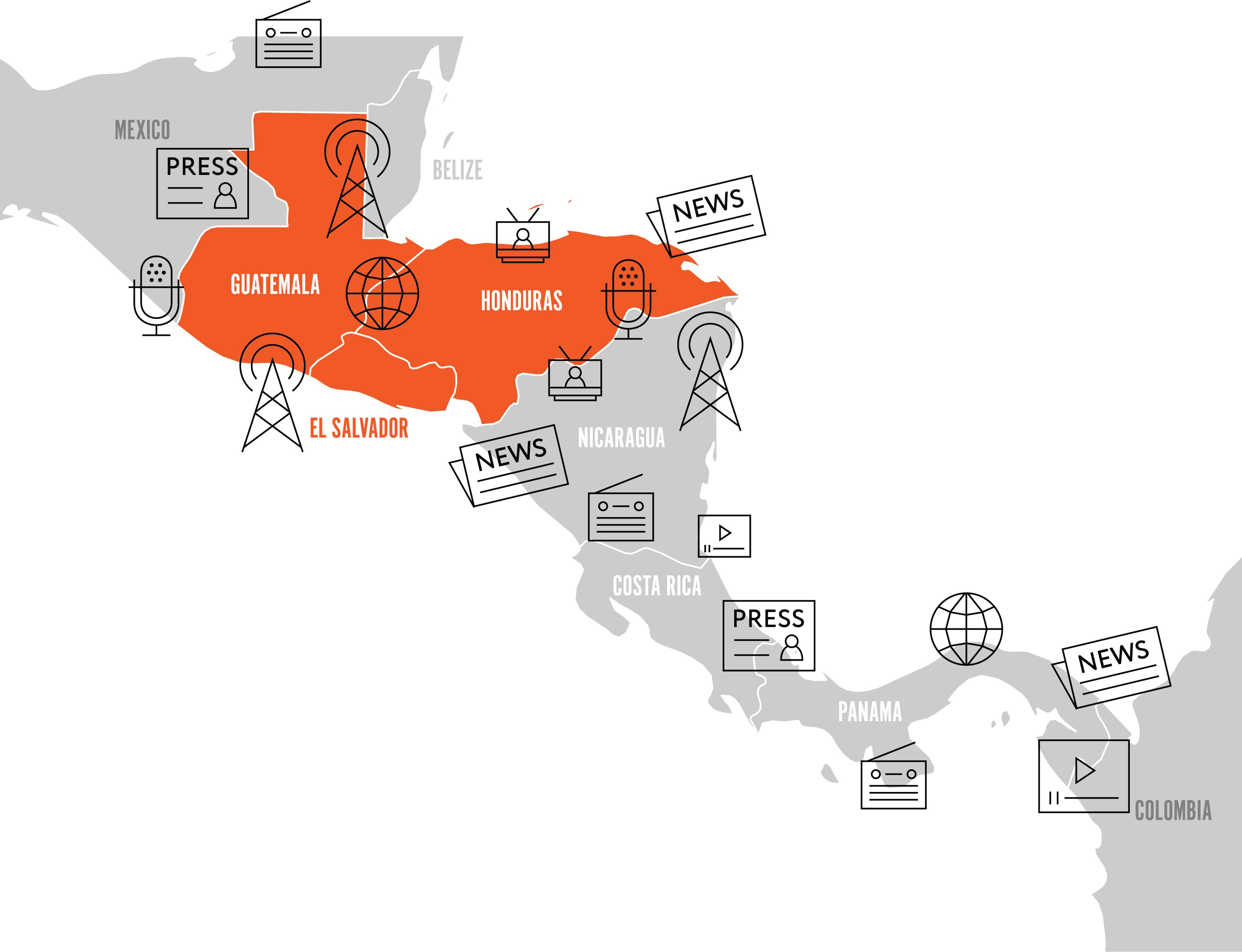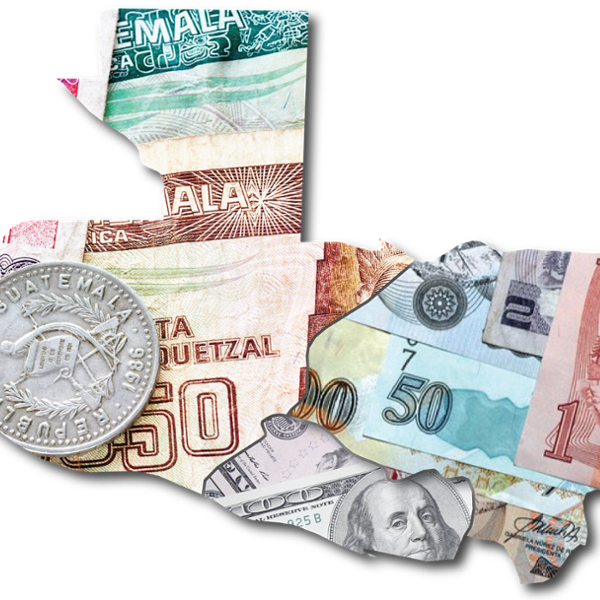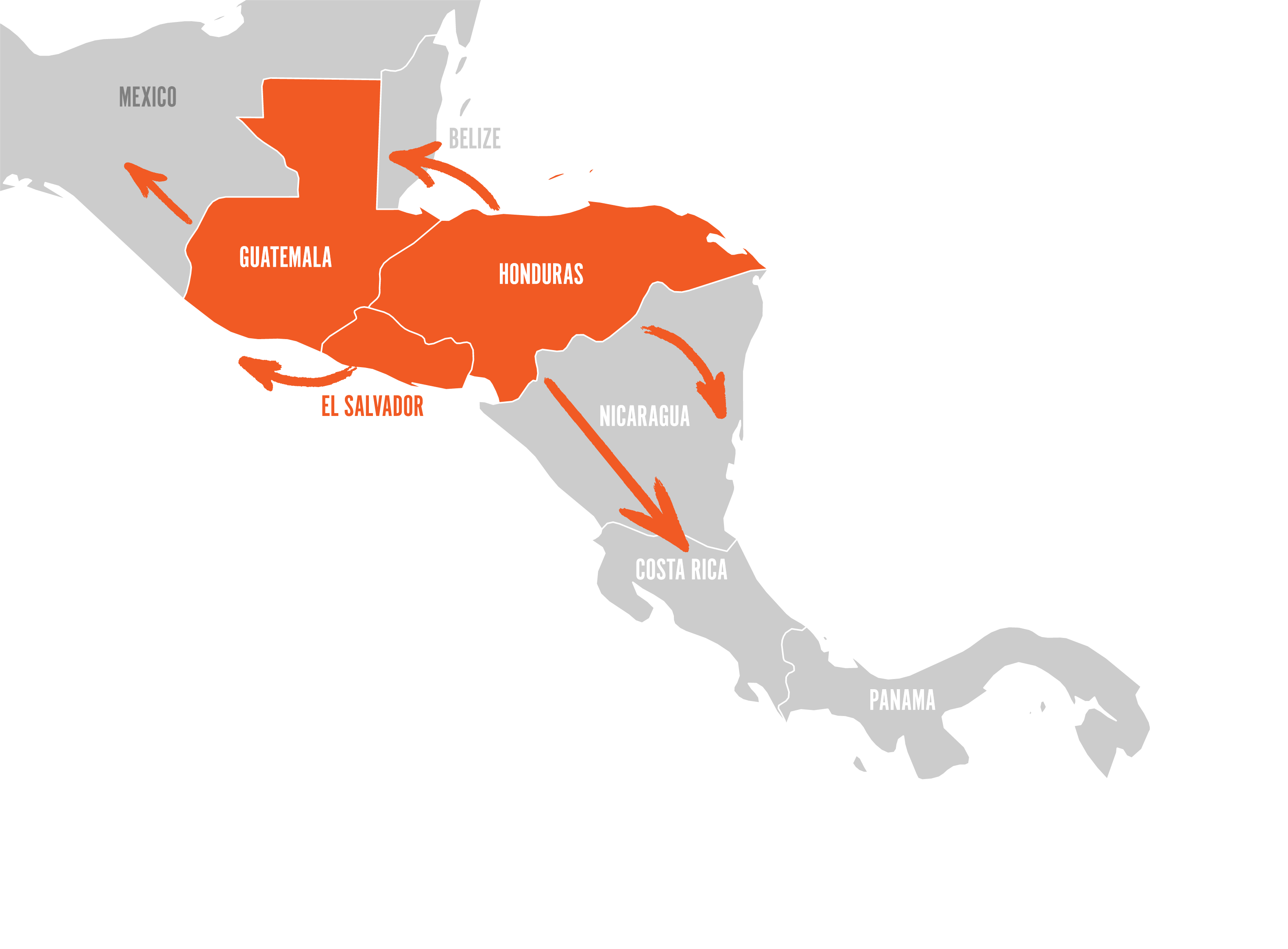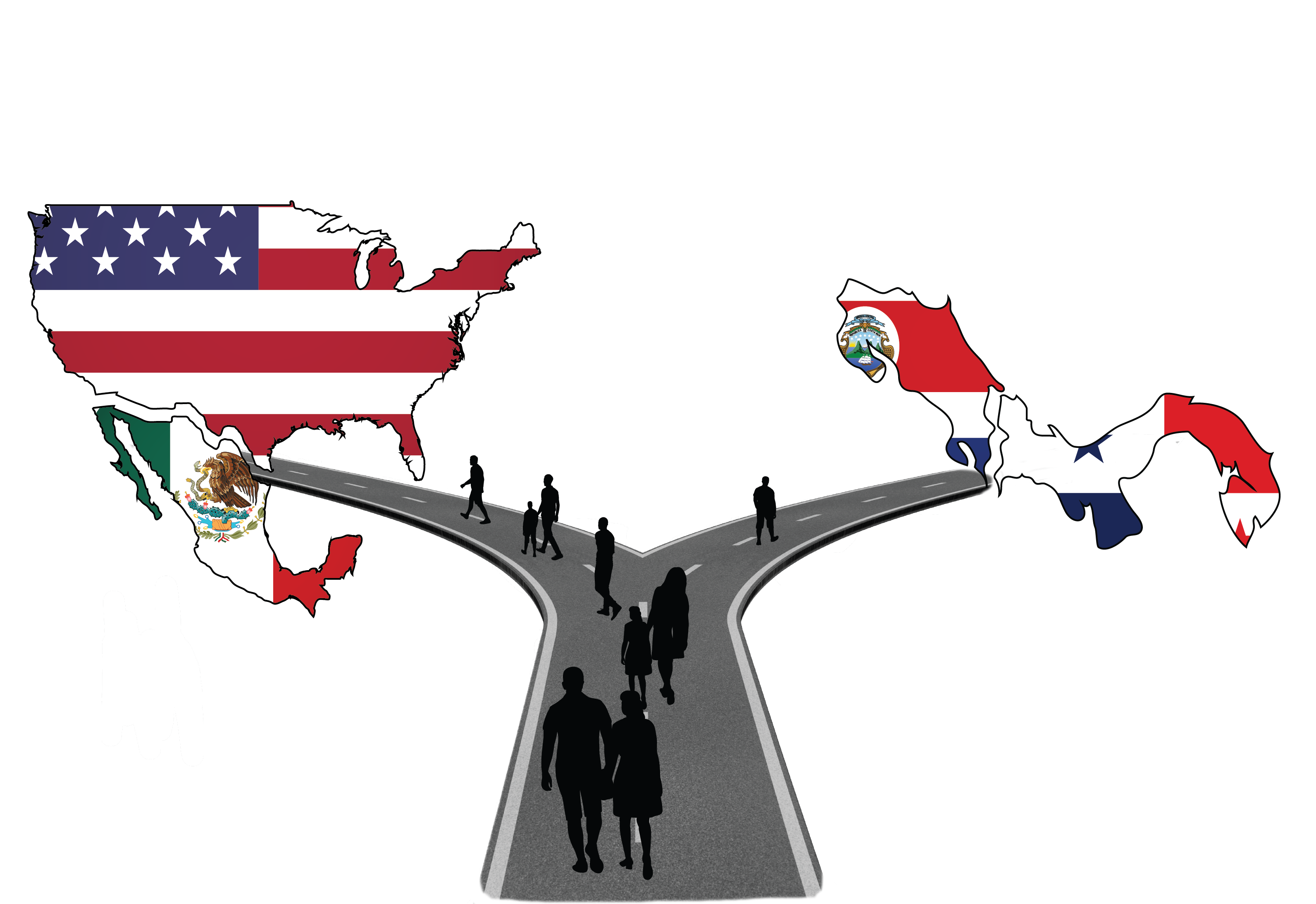Prosperity and Security in Central America Research in response to BTI RFP 19-01

The United States and Mexico co-hosted the second Conference on Prosperity and Security in Central America as a follow up to the first conference held in 2017. Participants included the United States Secretary of State, Secretary of Homeland Security, Mexican Foreign Secretary, Mexican Secretary of Government, the President of Honduras, the President of Guatemala and the Vice President of El Salvador.*
BTI, in collaboration with the Department of Homeland Security Office of Strategy, Policy, and Plans, and DHS Science and Technology Office of University Programs, is conducting four projects selected from RFP19-01.
*According to the U.S. Department of State website on the Second Conference on Prosperity and Security in Central America (https://www.state.gov/fact-sheet-the-second-conference-on-prosperity-and-security-in-central-america/)
Perspectives

The project will provide Northern Triangle and Mexican national perspectives on what the humanitarian, economic, and political crises associated with migration are as well as perspectives on how to best address those crises through policy. The project will also give insight to local perspectives from the Mexico-Guatemala and US-Mexico border areas on what the humanitarian, resource and legal crises associated with migration are, as well as perspectives on how to best address those crises. Overall, the research is meant to provide a cogent narrative framework that helps US policymakers uncover the symbolic, language-related barriers inhibiting common understandings necessary for cooperative policymaking among US, Northern Triangle, and Mexican authorities and their respective populace. Narrative structures reveal elements of interdependence, resilience, and decency within and between cultures. Further, it aids in determining realistic migration management programs and developing messaging strategies that stabilize migrant perspectives and expectations of US policies concerning the benefits of legal migration. The study, which will produce a final report and peer-review academic published paper, will utilize the narrative policy framework (NPF) to better contextualize those elements of narrative with particular policy implications.
ECONOMIC MOTIVATIONS
Principal Investigators: Detlof von Winterfeldt, Ph.D., Jonathan Eyer, Ph.D., University of Southern California

Migration from Northern Triangle countries is driven in part by weak economic conditions in origin countries. One policy mechanism through which the United States could reduce illegal immigration would be to promote strong economic institutions in those countries. In order to design optimal development policies for Northern Triangle countries, officials and decision-makers need to better understand who the migrants are and what policy and program measures might be most effective in influencing their decision-making.
The project Economic Motivations of Migrants from the Northern Triangle consists of three core components. First, an analysis of the characteristics of actual and potential migrants in terms of where they live, what their economic situation is, and the degree to which economic motivations cause them to want to emigrate will be conducted. Those who have emigrated or intend to emigrate will be compared to those who do not want to emigrate in order to understand the key systematic differences between these populations.
Second, development of a graphical-interface tool will allow users to project changes in migrations from the Northern Triangle based on assumptions about the impact of U.S. policies on local economic and security conditions in the Northern Triangle. This tool will be based on statistical analysis that will relate the intention to emigrate to various underlying root-cause factors causing people to want to emigrate, including their economic situation, income, and local violence conditions. The projection tool will permit users to assess the impact on emigration of economic development programs that increase income and employment or security improvement programs that reduce crime. The tool can be used to establish key quantitative metrics for economic development or security improvement programs in terms of how these programs need to improve economic or security outcomes in order to mitigate emigration from the Northern Triangle. It will also identify geographic areas and sectors of Northern Triangle populations and economies that have the highest rates of intended emigration and should, therefore, be the focal points of economic development efforts. The tool will be developed in the R/Rstudio language using the shiny interface. The resulting source code that is used to compile the tool will be provided to DHS with instructions for internal compilation. Alternatively, the app can be hosted either on a CREATE server or on a password-protected instance of the shinyapps distribution network.
Third, an assessment of historical evidence related to policies that have affected emigration flows from the Northern Triangle, Puerto Rico, and Mexico to the U.S. will be performed. This assessment will be based on LAPOP data as well as case studies on historical cessations of large-scale migrant flows from less-developed countries and territories to the U.S. Insights from the assessment will be used to identify how economic conditions changed as migratory flows ended, and which U.S. policy initiatives were effective in stemming the flow of migrants. These case studies will shed light on the role that economic development played in impacting migrant flows, as well as the policies that were adopted to bring that development about.
For more on the project...
REGIONAL APPROACH
Principal Investigators: Andrew Selee, Ph.D., Randy Capps, Ph.D., Migration Policy Institute

Near-record apprehensions along the U.S.-Mexico border have made it urgent to address the new flows from Central America and other world regions. Families traveling together, children traveling alone, and adult asylum seekers comprise a majority of the new flows, thereby reducing the effectiveness of traditional U.S. border security strategies that were designed to address flows of largely Mexican men seeking work in the United States. At times during the past year, the sheer volume of arrivals has challenged CBP’s ability to carry out basic border enforcement activities such as migrant detection, processing, custody, and transportation.
The project Developing a Regional Approach to Managing Migration Flows from the Northern Triangle through Mexico to the United States looks at how, over the past few months, the outline of a more robust regional approach to managing migration flows is emerging, with the governments of Mexico, Guatemala, El Salvador, Honduras, Costa Rica, and Panama making commitments to partner with the United States. The U.S. and Mexican governments have worked closely together on the Migrant Protection Protocols (MPP) as well as enhancements to Mexican enforcement efforts. The Guatemalan government has signed an agreement to process asylum claims from third country nationals in Guatemala, while Honduras and Guatemala have made commitments to deal with migrant smuggling and repatriation of their nationals. Panama and Costa Rica already collaborate extensively with DHS around screening migrants passing through their territories, but they are in discussions with U.S. authorities on further measures to limit northward flows.
Through extensive interviewing of government and non-governmental leaders, the following will be conducted: an assessment of the institutional and policy capacity of these governments to implement current agreements; determination of the respective government’s ability to strengthen their institutional structures to deal with migration flows, potentially provide asylum, and reintegrate repatriated migrants; and other potential options for regional cooperation in managing migration effectively.
Mapping of detailed migration flows from Central America and from countries outside the region (including from Asia and Africa) will also be performed. Publicly available datasets, supplemented by qualitative interviews in Central American countries, will be used to construct a more detailed map of primary sending regions and how these have shifted between 2014 and 2019.
Results will be published in an accessible report and disseminated via a private roundtable for key stakeholders, a public launch event, and through media and web-based platforms.
This study will inform DHS, the U.S. government, regional stakeholders, and the public about the complex and quickly changing dynamics of regional migration and the possibilities of a sustainable regional approach to better management of migration flows.
ROAD LESS TRAVELED
Principal Investigators: Marcus A. Boyd, Ph.D., Barnett Koven, Ph.D., Kathryn Lindquist, Ph.D., University of Maryland

The project The Road Less Traveled: Bolstering the Absorptive Capacity of Southern Central American States to Facilitate the Southern Flow of Northern Triangle Immigrants will examine to what extent Northern Triangle migrants are choosing alternative locations, specifically Panama and Costa Rica. If so, is there more that the U.S. Government (USG) could be doing to aid Panama and Costa Rica’s absorption of Northern Triangle migrants. If not, why not? What are the specific policies/investments that the USG could undertake to encourage migration to those nations? Furthermore, recognizing that the drivers of migration likely vary between distinct groups of migrants (those from Northern Triangle countries, those from elsewhere in the western hemisphere, and those from outside of the western hemisphere), this study will explore how the drivers of destination choice and the potential activities the U.S. Government may consider employing to increase absorptive capacity vary between migrants from the Northern Triangle versus those the aforementioned types of non-Northern Triangle migrants. The goal of the project will be to identify at what rate Northern Triangle (and other) migrants choose to emigrate south as opposed to north. The countries that make up the Northern Triangle have systemic issues that affect the livelihoods of the citizens of those countries. Costa Rica and Panama have more developed economies and more stability than the Northern Triangle countries. Northern Triangle countries lack the stable agricultural and manufacturing industries and substantial international investment that are present in Costa Rica and Panama. Our project will use demographic data collected by the target countries, field interviews, a scan of the literature, and econometric modeling to determine if Costa Rica and Panama could serve as alternative destinations for Northern Triangle (and other) refugees and migrants. A secondary goal of the research will be to determine if economic investment in Costa Rica, and/or Panama could affect the flow of migrants/refugees from Northern Triangle (and other) countries. As the present situation is not sustainable and the United States cannot absorb the additional labor force, this project will identify alternative destinations. The results from the project could be used by the Department of Homeland Security, U.S. Government, and U.S. business interests to work with the governments and industries of Costa Rica and Panama to absorb a proportion of the Northern Triangle (and other) refugees and migrants.